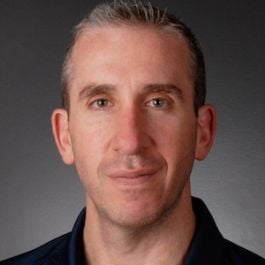When it comes time for CEOs to raise a first substantial round of funding, the quest can be time consuming. They spend months soliciting meetings, shuttling between the offices of powerful would-be investors, repeatedly explaining the gap they’ve spotted in the market and how their solution — and their team — will beat out the competition.
But once the checks are banked and the post-funding celebrations are over — what next?
CEOs must immediately start work delivering on the vision they’ve just sold to investors. And to do that, they need a team. To figure out how to prioritize which leaders to recruit or teams to grow, we checked in with eight executives at technology companies that recently landed their first substantial round of funding — anywhere from $8 million to $85 million. We wanted to know which positions they filled first after the money came in. Their responses speak to the varied requirements of each organization — most major business segments are represented here — and offer an insight into the leadership style of the CEOs who hired them.
Marketing and Growth
You’ve proven the concept and built the product — now it’s time to tell the masses about your creation. For some CEOs, user growth and retention is priority number one after a big round of funding.
Company: Ramesh leads Misfits Market, which sells fresh-but-funny looking fruits and veggies via a subscription service.
The funding: $85 million Series B in Jul 2020
First post-funding hire: VP of Growth and Analytics Kelly-Marie Bermudez.
Why did you choose to prioritize that position?
This hire had been on our radar for some time, but it dove-tailed with the greater growth expectations any young company faces after a major raise. To get to the next stage, we needed a seasoned operator who could help us think more strategically about acquisition and retention. Kelly-Marie is a veteran of other D2C startups, like Casper, that experienced rapid growth.
“Continue to operate almost as if it never happened.”
What advice would you give to CEOs who just raised their first big round of funding?
Continue to operate almost as if it never happened. Too often, teams get distracted after large funding rounds, as the company now has more resources to put toward an array of projects along many different paths. Prior resource constraints actually have the effect of narrowing your focus on top priorities, something you should retain as you grow. Stay scrappy and keep building toward that north star with your head down.
Product
For some tech companies, the post-funding philosophy is simple: You can’t have a successful business without a stellar product. With complex back-end technology powering intuitive user experiences, sometimes it makes sense to invest new funding in product design and development teams first.

Joe Spinelli, CEO of HaulHub
Company: HaulHub builds software to help heavy construction companies manage transportation, material ordering, customer management and ticketing.
The funding: $30 million Series B in March 2020
First post-funding hire: HaulHub has focused on expanding its engineering and product teams.
Why did you choose to prioritize that position?
HaulHub has always been a product-driven company that prides itself on executing faster than the competition and we’ve used our funding to accelerate our pace of development.
“I think when funding comes in the door, the most important thing to remember is to stick to a plan.”
What advice would you give to CEOs who just raised their first big round of funding?
With new cash on hand, there’s always the temptation to do a ton of new things. I think when funding comes in the door, the most important thing to remember is to stick to a plan. Yes, it’s great to use that fuel to grow your business, but it’s also important not to start doing a bunch of new things just because you can now afford them. Spend the money on things you really think can affect the business, not just ‘stuff that companies with money do.’
Sales
For some businesses, the ultimate goal of post-financing growth is independence, and never having to raise funding again. With a product ready to sell, the focus then turns to the organization’s sales team — where larger clients provide more efficient avenues for revenue growth.

Nicolas Vandenberghe, CEO of Chili Piper
Company: Chili Piper automates the process of scheduling and email, helping to boost productivity for sales teams.
The funding: $18 million Series A in Aug 2020
First post-funding hire: Vice President of Enterprise Sales
Why did you choose to prioritize that position?
We are focused on penetrating larger enterprises, and we’d like to grow our footprint rapidly by exposing our solutions to different revenue teams inside of these larger enterprises. Every enterprise that becomes a Chili Piper customer offers a significant revenue growth opportunity for us over time. To apply more focus on these important efforts, we recently hired a dedicated enterprise sales leader and are now focused on building a team to report to him. We see this as a huge revenue growth opportunity for us in the future.
“Increase your chances of never needing funding again.”
What advice would you give to CEOs who just raised their first big round of funding?
Don’t hire quicker than your culture can spread. It’s too easy to underestimate the power of company culture or to assume that it will prevail despite massive hiring. Monetize as soon as possible — very often startups that are fresh off their funding rounds decide to prioritize growth over revenue, and they spend that money buying clicks and customers instead of monetizing. If you can prioritize growth and revenue at the same time, by all means do that. But if you’re considering postponing monetization, that’s a mistake. And finally, increase your chances of never needing funding again. Obtaining funding is great, but it’s still smart to set yourself up for a future without it. If you can formulate a plan that takes you to break-even or even allows you to become profitable, we highly recommend you follow that. It will increase your set of alternatives and help you negotiate from a position of power if you decide to raise another round.
Finance
An ad hoc team can effectively manage a startup’s financial planning and analysis for a while — but not forever. At some point, finance needs to become its own team with a professional in charge. That’s why Ontic Technologies brought on a finance team leader to help with reporting, budgeting and other key functions.
Company: Ontic Technologies’ data analysis platform detects insider threats and other potential dangers for businesses, and helps security teams to react quickly.
The funding: $12 million Series A in April 2020
First post-funding hire: Vice President of Finance Ryan Suneson
Why did you choose to prioritize that position?
We value data-driven insights to advance our business, and this is why we prioritized the hiring of Suneson. With more than 15 years of finance and operations experience in enterprise SaaS, he is exactly what we needed to support our business operations through financial reporting, forecasting, budgeting and analysis, as well as building and maintaining the corresponding systems.
“Look for the next horizon.”
What advice would you give to CEOs who just raised their first big round of funding?
If you have accomplished more than you ever thought you could at your earliest stages, don’t rest on this or get too comfortable. Look for the next horizon. This is something I coach many entrepreneurs on, and it’s especially crucial for a small company in its early stages.
Engineering
All companies look to scale their operations to some degree in the wake of a large funding round. This requires building engineering capacity in terms of leadership, institutional know-how and head count — and is especially important in complex fields like healthtech.

Siva Namasivayam, CEO of Cohere Health
Company: Cohere Health’s software platform seeks to change the way patients, physicians and health plans collaborate and work together.
The funding: $10 million Series A in Jul 2020
First post-funding hire: Cohere Health sought to recruit “a nimble team of software engineers that were highly collaborative, creative, and confident with trying things in a fast environment,” according to a statement submitted by CTO Niall O’Connor, accompanying responses from CEO Siva Namasivayam below. “Our goal was to hire the right individuals with the ability to focus on anything from clinical content to design to development and beyond with confidence.”
Why did you choose to prioritize that position?
As a technology startup company, it was important for the initial hires to form a cohesive, operational nucleus of the organization. We didn’t just hire one — we hired ten software engineers. Hiring mission-driven individuals allowed us to scale up as a team immediately. Since Cohere is a healthcare technology organization, our nucleus needed to start with product development and hiring to create an innovative culture from the beginning. Having a company that reflects the diversity of the customers we serve will enable us to create customer-centered products and services.
“Hiring a diverse team to carry on the shared mission allows for a collection of expertise from a broad spectrum that brings vibrancy to the culture, product and ultimately the market.”
What advice would you give to CEOs who just raised their first big round of funding?
There are three important things that entrepreneurs need to remember after raising the first big round of funding. First: Remember your roots. The funders entrusted you with their investment because they caught your vision. Second: Stay nimble and resourceful regardless of the money. Never lose sight of what set your company apart in the first place. Third: Hire the right leaders. Burnout for entrepreneurs is very high and hiring a diverse team to carry on the shared mission allows for a collection of expertise from a broad spectrum that brings vibrancy to the culture, product and ultimately the market.
Data
A robust database can form the backbone of a successful startup. Hiring professionals who can find valuable ways to leverage this crucial business asset can be a crucial first post-funding step.
Company: Steady helps users find flexible work opportunities, stabilize their finances and plan for the future.
The funding: $15 million Series B in June 2020
First post-funding hire: Chief Data Officer Winn Martin
Why did you choose to prioritize that position?
Our business is built around the thesis that the collaborative use of data can help to lift the outcomes of the entire community.
“Focus on building the right team and giving them clear direction.”
What advice would you give to CEOs who just raised their first big round of funding? Focus on building the right team and giving them clear direction on how the funds will be spent, what the key milestones will be and what success will look like in six, 12 and 18 months’ time for the team and company.
Customer Service
Sky-high user growth figures are great, but moot if the existing customer base isn’t rock solid. In the wake of its recent funding, Aclaimant has invested in roles designed to enhance the user experience, from UI/UX designers to customer success managers.

David Wald, CEO of Aclaimant
Company: Aclaimant’s insurance tech platform allows construction companies, staffing agencies, hospitality groups and others to report on-the-job accidents.
The Funding: $10 million Series A in June 2020
First post-funding hire: A UI/UX Designer, but Aclaimant also had development, customer success and data services roles open at the time.
Why did you choose to prioritize that position?
We had experienced tremendous growth going into the end of 2019, and our next challenge was continuing to ensure that we could maintain the quality, service levels and products that our customers have come to know and love.
“There’s a big difference between trying to spend money and strategically making aggressive investments in your business.”
What advice would you give to CEOs who just raised their first big round of funding?
Try to time out once-in-a-century pandemics? In all seriousness though, the biggest piece of advice that we received, and that we would pass along to everyone else, was to not try to spend it all at once. There’s a big difference between trying to spend money and strategically making aggressive investments in your business. For us, continuing to make smart and measured investments — all focused on our growth — ensured that we didn’t just burn through our Series A, but still continued to maintain our growth rate and aggressive approach.
People
For companies with aggressive recruitment plans, it might be a good idea to first hire someone who can oversee a rapid headcount expansion while maintaining a strong company culture. For example, Quontic Bank was already ten years old by the time it raised its first round of funding earlier this year — and its first priority was finding someone who could help grow the company’s team and culture concurrently.

Steven Schnall, CEO of Quontic Bank
Company: Quontic Bank seeks to disrupt the banking industry with adaptive lending and innovative deposit products.
The funding: $8 million Series A in March 2020
First post-funding hire: Chief People Officer Mike Lantz
Why did you choose to prioritize that position?
A chief people officer was imperative for our team to hire post-funding. As the people truly make up the organization, we felt it was best to bring in a team member to recruit and retain top banking talent and further shape the innovative Quontic culture. Mike is charged with developing the skill sets of existing staff and continuously sourcing top talent for Quontic projects, and has worked to onboard more than 45 new employees since starting in April 2020.
“Without the right people, you cannot have good culture.”
What advice would you give to CEOs who just raised their first big round of funding?
My advice to fellow CEOs would be to focus on hiring the right people who are dedicated and committed to helping the company grow. They should be adaptive and open to new ideas. Without the right people, you cannot have good culture. By having an open and honest culture, it allows employees to feel comfortable with one another and share a common goal of positivity and success.









